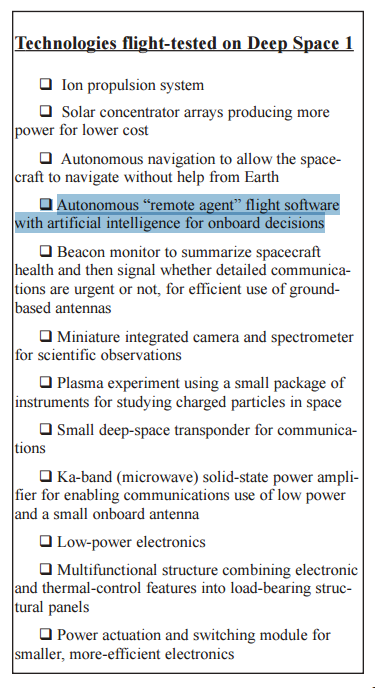#TBT: NASA’s 2001 technology
As we celebrate MATLAB Central’s 15th anniversary, many of the blog authors are taking a nostalgic stroll down memory lane. Since my blog launched a mere 6 months ago, that would be a mighty short trip for me!
I’ve decided that while the Behind the Headlines blog may be new, the concept behind the blog definitely is not. In my first post, I said, “This blog will focus on highlighting the role of MATLAB and Simulink in today’s most visible news stories, and the scientists and engineers that make them happen.” We’ve covered top 2016 news stories such as fighting Zika, doping at the Olympics, and how LIGO captured proof of gravitational waves.
So for my stroll down memory lane, I’d like to look back at how MATLAB and Simulink played a role in a news story from 2001, the year MATLAB Central was launched:
In 2001, NASA’s Deep Space 1 (DS1) probe wrapped up its three-year mission, which successfully tested 12 new technologies, according to an article in Spaceflight Now. DS1 helped pave the way for artificial intelligence (AI) applications on space probes, by testing an AI autonomous navigation system that utilized images of its surroundings to plot its course through the solar system. (Who says autonomous vehicles are a new technology?) DS1 also tested a propulsion system called Ion Propulsion, as well as new monitors to help summarize health status for ground controllers. Here’s a list of the 12 technologies, according to the mission fact sheet.
The health status monitors, highlighted on the above list, included system-level fault protection (FP) software. This lead to the “unofficial 13th technology” of the DS1 mission: Model-Based Design (MBD). MBD was used to design the FP software, using MATLAB, Stateflow, and Simulink Coder.
DS1 was an early “robotic spacecraft”. It required the intelligence and autonomy to monitor and control itself while it operated a great distance from Earth. Here’s a link to a 2001 user story that explains DS1 made use of model-based design for the FP system. The FP system was crucial to the lifespan of DS1.
Fly-by of a comet
The reliability of the FP system was demonstrated when the DS1 mission was extended well past its planned end in 1999. The extension enabled DS1 to complete a fly-by of Comet Borrelly. DS1 captured the best-resolution pictures to date of any comet’s nucleus.
Does this sound familiar? Stay tuned for information about another extended mission, where ESA’s Rosetta mission is planning a spectacular grand finale.






.jpg/785px-Rosetta_and_Philae_at_comet_(11206660686).jpg)




Comments
To leave a comment, please click here to sign in to your MathWorks Account or create a new one.